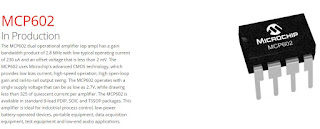The rather loud and unrefined operation of the Propex HS1800 furnace has bothered me ever since I purchased it as a backup for the Carver P4 I installed in Isolde circa 1999. The price difference of the Propex was within 10% of the Carver P4 being at 18% less in BTU capacity compared to the Carver. I have always suspected it is a simpler design with lower cost of bill of material. Tonight, I decide to open it and examine.
Removing the small cover in which the two cable harness enters the furnace is easy and obvious. Not so much for opening the furnace chassis.
What immediately strikes me is the number of screws on the housing. It was very difficult to tell which are the one you are supposed to remove to gain access of the inside. I carefully removed all the screws and still what looks to be the cover still inseparable from the base plate. It turned out the seams are cemented with clear silicone. Cutting it with a thin razor like utility knife did the trick.
The reason for the clear silicone caulking is clear once I see the inside design. It is to prevent air leaks around all the gaps of the sheet metal housing, which serves as an air plenum for the comfort warm air.
access the cover where the two harness connects to the PCB is easy
combustion intake and flue exhaust ports
here you can see the comfort air blower which shares the same DC motor with the burner air blower on the other end of the motor shaft
the combustion chamber/heat exchanger assembly is all constructed out of welded stainless steel sheet metal
stainless steel is relatively rust (oxidation) resistance, but very poor heat conductor so the efficiency would likely suffer
here is the Carver's heat exchanger - like an air-cooled cylinder head for very good reasons
there is only one PCB inside with a Microchip PIC16C711 8-bit microcontroller
the little PCB at the lower right hand corner is a fan speed detection sensor; it appears it is essentially a windmill constructed with a fan motor; evidently it is very prone to failure; I believe my experience of many instances with the heater mystically stop heating was caused by the windmill got stuck not spinning
a closeup view of the PCB
there is one gas solenoid (yellow); the black potted module below it is high tension transformer for the spark ignition
the thermostat
inside the thermostat is a dual differential comparator chip and some analog electronics with the thermistor at the lower left; from my inference it functions just like a simple mechanical thermostat but with semiconductor mimicking a mechanical thermostat
There is not a whole lot inside the furnace PCB. The heart of it is the 8-bit microcontroller. Next in complexity is the MC14541 16-bit programmable timer (i wonder if it is functions as a dead man timer should the microcontroller goes into the weeds (crashes), followed by a dual op amps. Here are all the major components on the main PCB. The two power FETs are likely for the electronic ignition, operation of the solenoid valve, or DC motor on/off control.
Microchip PIC16C711 8-bit microcontroller
As I suspected it is much less sophisticated compared to the Carver P4 which has independent motors and two similar Microchip's PIC microprocessors but with a lot more resources. The Carver clearly has a higher cost bill of material. The heat exchanger alone is a much better one from the standpoints of quiet operation, efficiency, and even regulation of heat due to higher thermal mass.
I have no first hand knowledge of the other later models of Propex furnaces as to their design. If they are all single motor design, I expect them to be not optimized for quiet operations as the comfort air blower speed takes a backseat to the combustion blower. Also if the speed is fixed as in HS1800 the air will feel cold as the heat exchanger temperature drops.
You can read about the Carver P4 here:
carver p4 furnace for isolde - part 1 (intro)
carver p4 furnace for isolde - part 2 (inside the P4 and my analysis of its design and operations)
carver p4 furnace for isolde - part 3 (more operation and installation details)
Update - 28.09.2016:
It has been over a year that I took apart the Propex HS1800. What I saw had really dampened my desire to put it back together and put it to work - heating my workshop. It is obnoxiously loud and crude. As of today it is still sitting there all apart in pieces.



















Thank You for the article! It is exactly what I looking for.
ReplyDelete